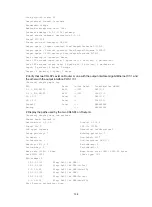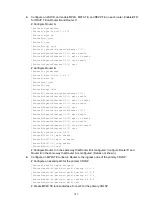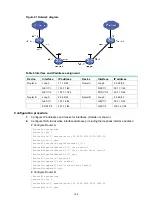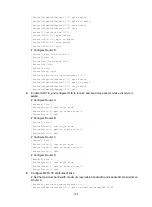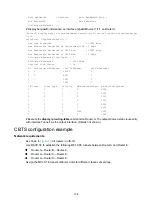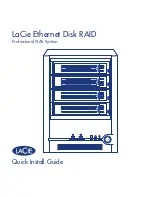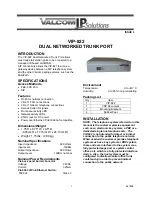
145
NOTE:
If you execute the
display mpls te tunnel-interface
command immediately after an FRR, you can
see two CRLSPs in up state. This is because FRR uses the
make-before-break
mechanism to set
up a new LSP, and the old LSP is deleted after the new one has been established for a while.
# Verify that the bypass tunnel is in use on Router B.
[RouterB] display mpls lsp
FEC Proto In/Out Label Interface/Out NHLFE
1.1.1.1/4/18753 RSVP 1122/3 Tun5
2.2.2.2/5/40312 RSVP -/1150 GE1/1/4
3.2.1.2 Local -/- GE1/1/4
# On the PLR, set the interval for selecting an optimal bypass tunnel to 5 seconds.
[RouterB] mpls te
[RouterB-te] fast-reroute timer 5
[RouterB-te] quit
# On the PLR, bring up the protected interface GigabitEthernet 1/1/2.
[RouterB] interface gigabitethernet 1/1/2
[RouterB-GigabitEthernet1/1/2] undo shutdown
[RouterB-GigabitEthernet1/1/2] quit
# Execute the
display interface tunnel
4 command on Router A to display information about the
primary CRLSP. The output shows that the tunnel interface is in up state. (Details not shown.)
# Wait for about 5 seconds, execute the
display mpls lsp verbose
command on Router B. The
output shows that Tunnel 5 is bound to interface GigabitEthernet 1/1/2 but not in use. (Details not
shown.)
# Execute the
display ip routing-table
command on Router A. The output shows a static route
entry with interface Tunnel 4 as the output interface. (Details not shown.)
Auto FRR configuration example
Network requirements
Use RSVP-TE to set up a primary CRLSP that explicitly uses path Router A—Router B—Router
C—Router D.
Configure auto FRR on Router B to automatically set up bypass tunnels for the primary CRLSP.
Configure BFD for RSVP-TE between Router B and Router C. When the link between Router B and
Router C fails, BFD can detect the failure quickly and notify RSVP-TE of the failure, so RSVP-TE can
switch traffic to the bypass tunnel.








